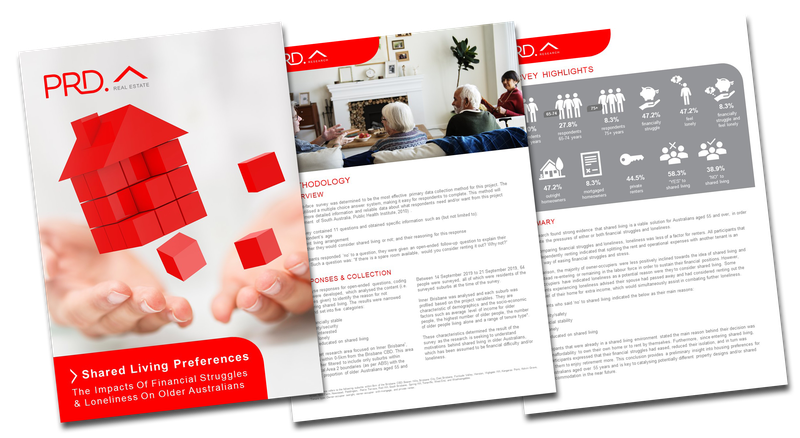The Study
Living alone is a significant contributor to general loneliness, particularly in the older community as it becomes more difficult to maintain a social circle. It is recognised that one in four Australians are lonely; especially widowed, divorced, or single individuals (APS, 2018).
Shared living for older Australians has increasingly appeared in studies in recent years as it is an attractive style of living for many. For older people, this could look like choosing to live with another older person, or sharing a home with younger families or singles.
The research focuses mainly on the suburbs of Inner Brisbane within 0-5km from the CBD, which includes: Brisbane City, Hendra, Kangaroo Point, New Farm, Paddington, Toowong, and West End.
This area was further filtered to include only suburbs within Statistical Area 2 boundaries (as per ABS) with the greatest proportion of older Australians aged 55 and over.
Key Findings
40.7% of participants are experiencing financial struggles. This suggests financial struggle is the main consideration in regards to shared living. Loneliness is a key factor as well, with 22.0% of participants identifying this as a reason for opting into shared living.
Shared living has a strong potential to alleviate financial struggles and loneliness.
- 40.7% of participants are experiencing financial struggles. This suggests financial struggle is the main consideration in regards to shared living. Loneliness is a key factor as well, with 22.0% of participants identifying this as a reason for opting into shared living.
- Shared living has a strong potential to alleviate financial struggles and loneliness.
Those that said ‘no’ to shared living gave five main reasons:
- The sense of security in their home
- Not struggling financially
- Not lonely
- Never thought of shared living as part of their lifestyle
- The lack of education on the concept of shared living to consider it
The final finding, ‘the lack of education on the concept of shared living’, highlights that Australians aged 55 years and over need greater knowledge about shared living.
Significance
This study is significant as it focuses on a specific type of housing preference within Australia's older demographic, especially this study:
- Creates awareness amongst property developers, architects, and designers to consider developing a functional shared living arrangement that could offer affordability, reliability, and liveability for older Australians
- Could potentially result in new property asset classes that advocate and accommodate shared living for older Australians
- Spreads awareness on the issues associated with housing affordability for older Australians in order to encourage the government to amend current legislation
- Encourages further studies on the potential benefits of shared living as a legitimate housing option for older Australians
In the event of a pandemic that requires isolation, shared living is a potential solution for older Australians.


